Sir Arthur Petfield and 'The World Shrinkers'
By Dr Robin Trotter, 2021 Queensland Business Leaders Hall of Fame Fellow | 31 January 2022
Guest blogger: Dr Robin Trotter - 2021 Queensland Business Leaders Hall of Fame Fellow.
Today the acronym OTC has a variety of meanings. But, for many older Australians, OTC has a specific meaning: it refers to the Overseas Telecommunications Commission. The Commission, now a defunct government body, was established as a corporate body of the Commonwealth of Australia under the Overseas Telecommunications Act, 1946. The Commission’s role was the ‘establishment, maintenance and operation of telecommunications services between Australia and other countries’ (Wikipedia). In effect, it was a government body established to manage Australia’s telecommunications’ links to overseas countries. Through the OTC communications, telegram, telephone, telex and photo-telegrams were relayed to other countries around the globe. To undertake these functions the Commission was part owner of overseas cables and international satellite facilities and it also operated international and coastal radio services in Australia and its territories. The OTC could well call itself and its services ‘the World Shrinkers’.
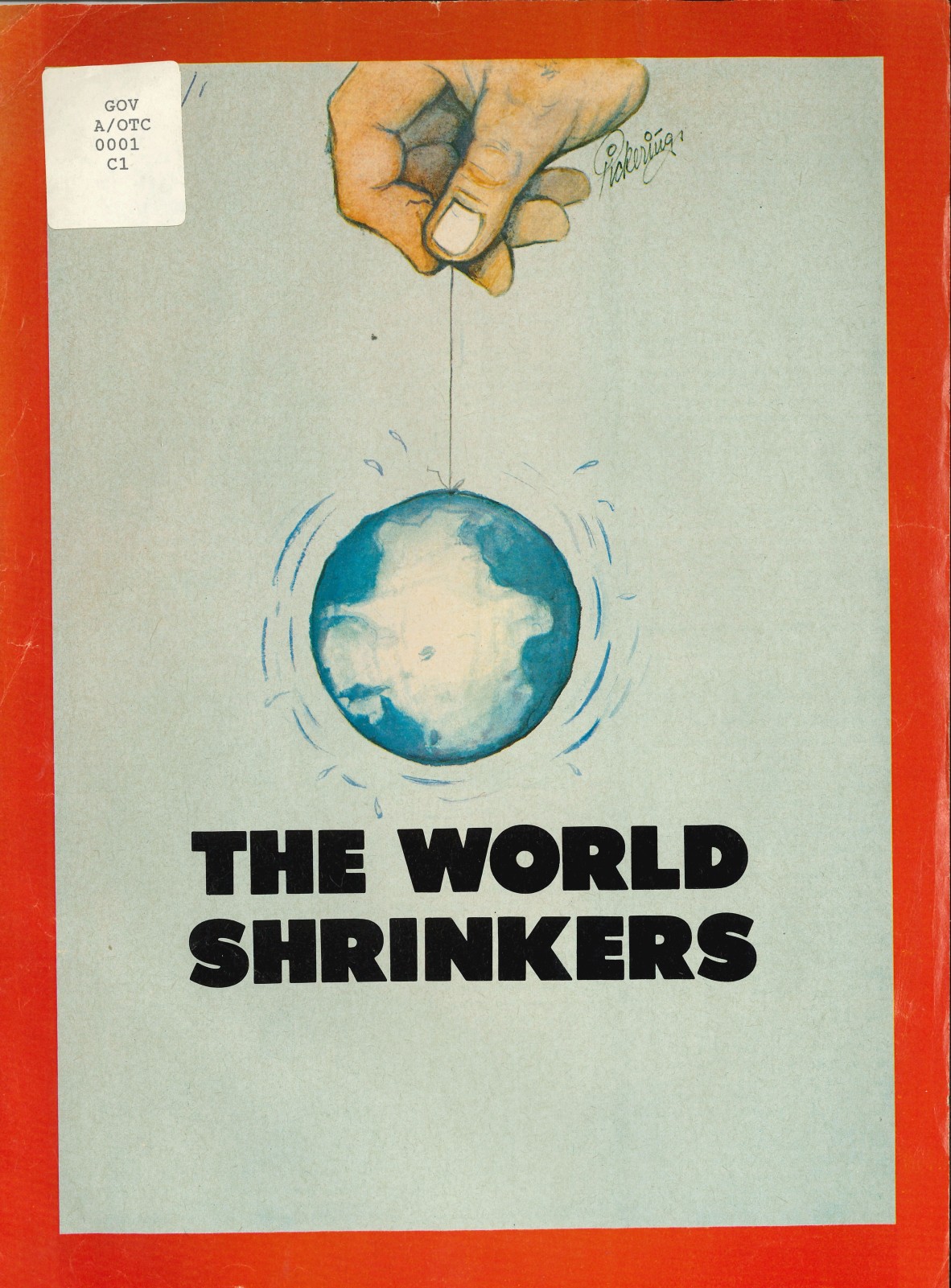
The world shrinkers. By Lawrence Durrant and Harry Young, Overseas Telecommunications Commission Australia, Sydney, 1977. John Oxley Library, State Library of Queensland.
The story of the OTC also melds with my story of Sir Arthur Petfield, a leader of Queensland’s business and industry sectors. Sir Arthur was appointed a Commissioner of the OTC in 1963 and served in that role until 1968 when he was appointed Chairman of the Commission. He served as Chairman up until his death in 1974. During the term of his roles as Commissioner and Chairman he oversaw a number of significant events such as Australia’s involvement in the historic moon landing as well as a raft of innovative developments in communications services ranging from opening up new facilities to improving the efficiency of the nation’s telecommunications services whilst also working to preserve the independence of the Commission.
Highlights of the OTC activities during the 1960s and 70s included:
1963 - Opening of the Commonwealth Pacific Telephone Cable (COMPAC) – an undersea telephone cable system connecting Australia with Canada and New Zealand.
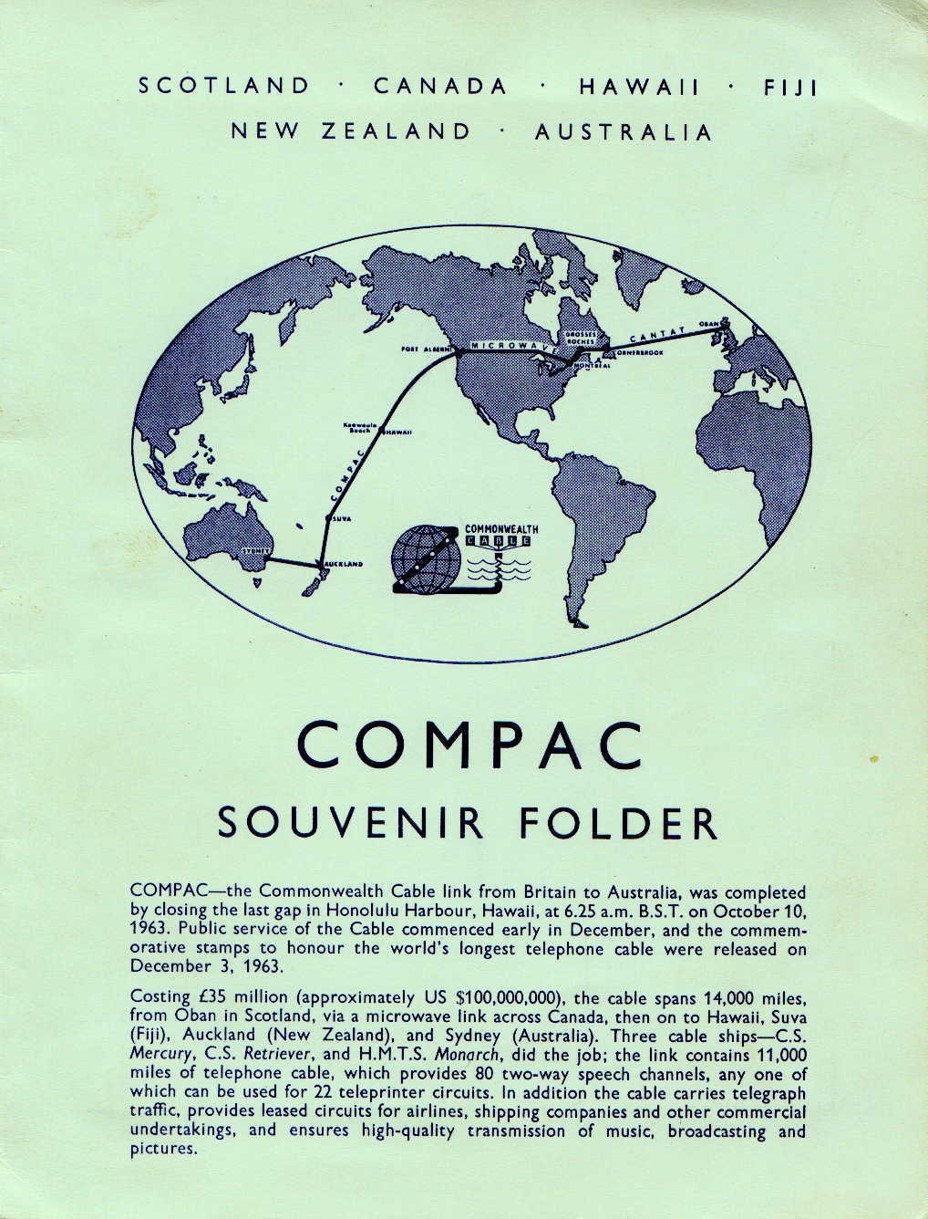
Souvenir Folder issued for the opening of COMPAC on 3 December 1963 which contained four cards for the four countries issuing COMPAC stamps. The cable ship shown is CS Retriever.
Source: History of the Atlantic Cable & Undersea Communications from the first submarine cable of 1850 to the worldwide fiber optic network. Atlantic-Cable.com, Bill Burns, 2013.
1965 - First Early Bird INTELSAT satellite launched and positioned over the Atlantic.
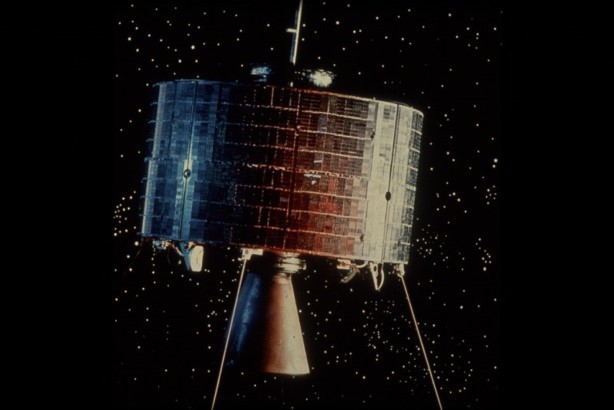
First Early Bird INTELSAT satellite launched and positioned over the Atlantic.
Source: [APRIL 6, 1965] THE EARLY BIRD CATCHES THE WORM (INTELSAT 1). galacticjourney.org, Kaye Dee, 2021.
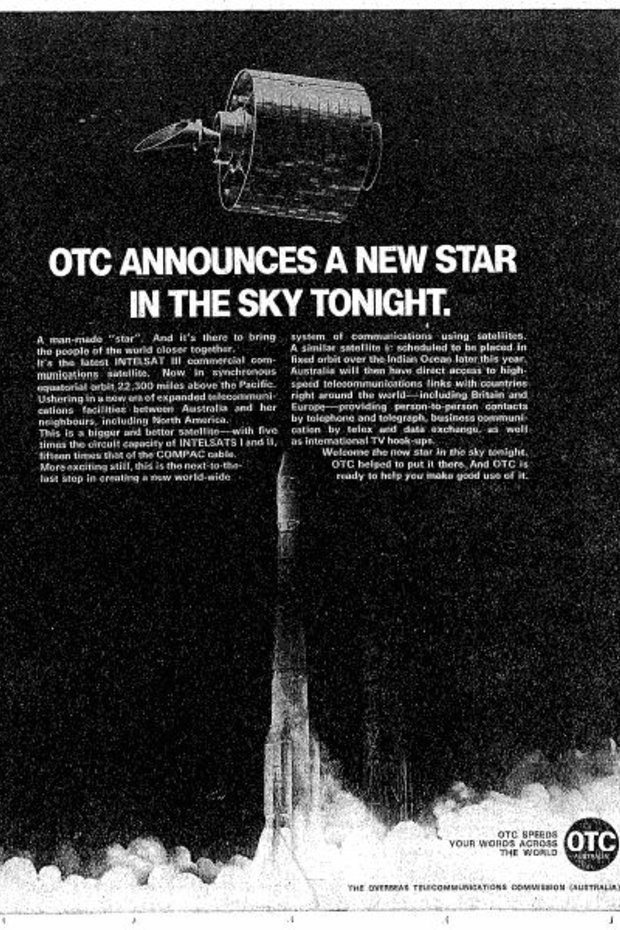
Overseas Telecommunications Commission ad in the Sydney Morning Herald, February 18, 1969.
Source: From the Archives: Intelsat III and the future of telecommunications, Sydney Morning Herald, 2019.
1966 - First satellite communications earth station opened at Carnarvon, WA.
Carnarvon satellite tracking dish – state of the art in satellite technology in 1960s.
Source: CSIRO. How the Apollo 11 Moon landing was achieved with the vital help of Carnarvon Tracking Station, ABC News, Tracey Stewart, 2019.
1966 - Opening of Melbourne Radio Installation at Cape Shank.
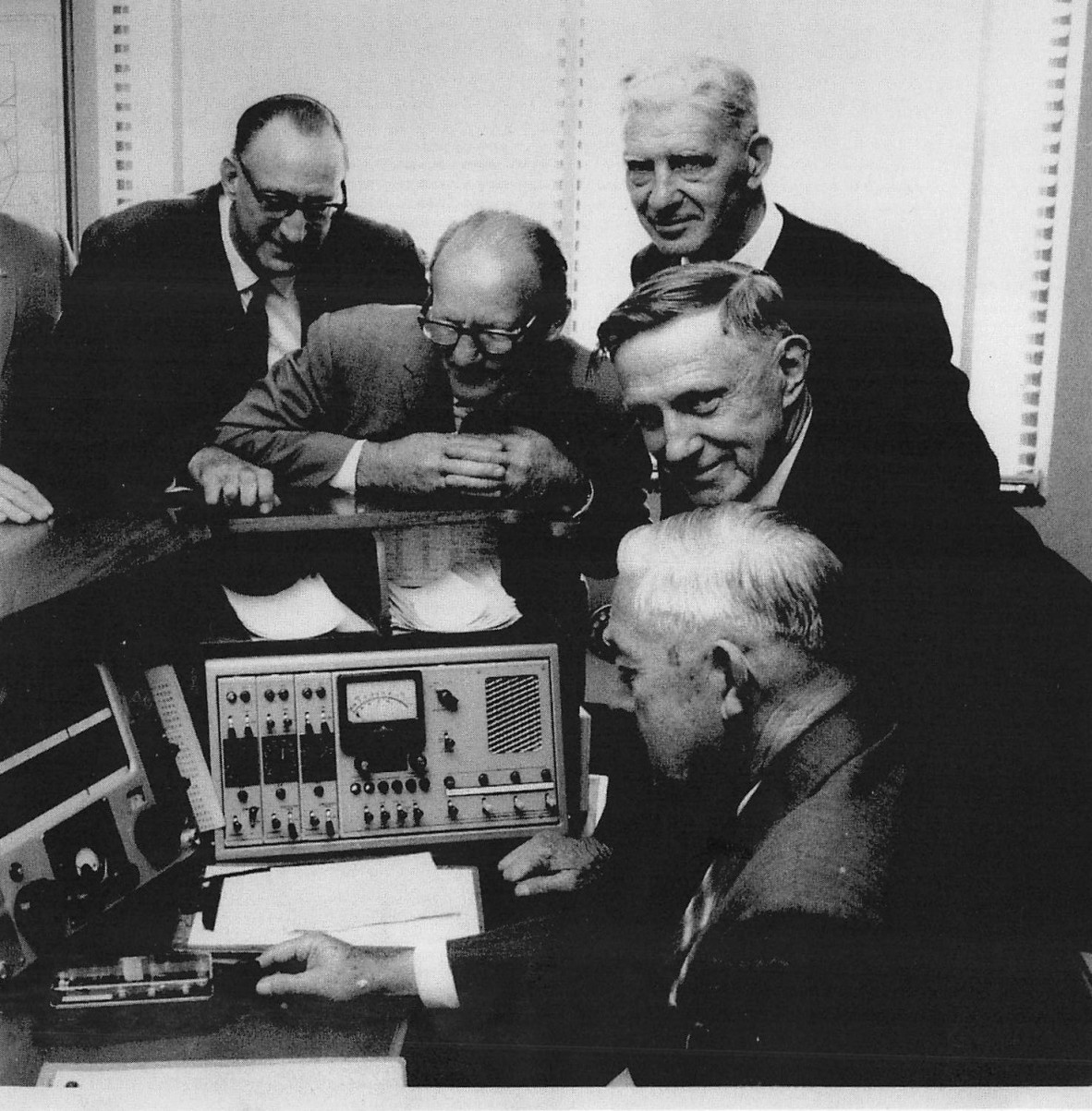
Sir Arthur Petfield (2nd from left) joins the onlookers as the then Postmaster-General, Me Alan Hulme (later Sir Alan) tries out a Morse key at the official opening of OTC’s Melbourne radio installation at Cape Schank on June 3, 1966.
29378 Arthur Henry Petfield Papers 1938-1978, John Oxley Library, State Library of Queensland.
1967 - Opening of the South East Asia Commonwealth Cable
SEACOM is a telephone submarine cable linking Hong Kong and Malaysia with Australia. The official opening was celebrated in Sydney, 30 March, with the opening by Queen Elizabeth II.
1967 - Qld Industries Fair Award to OTC.
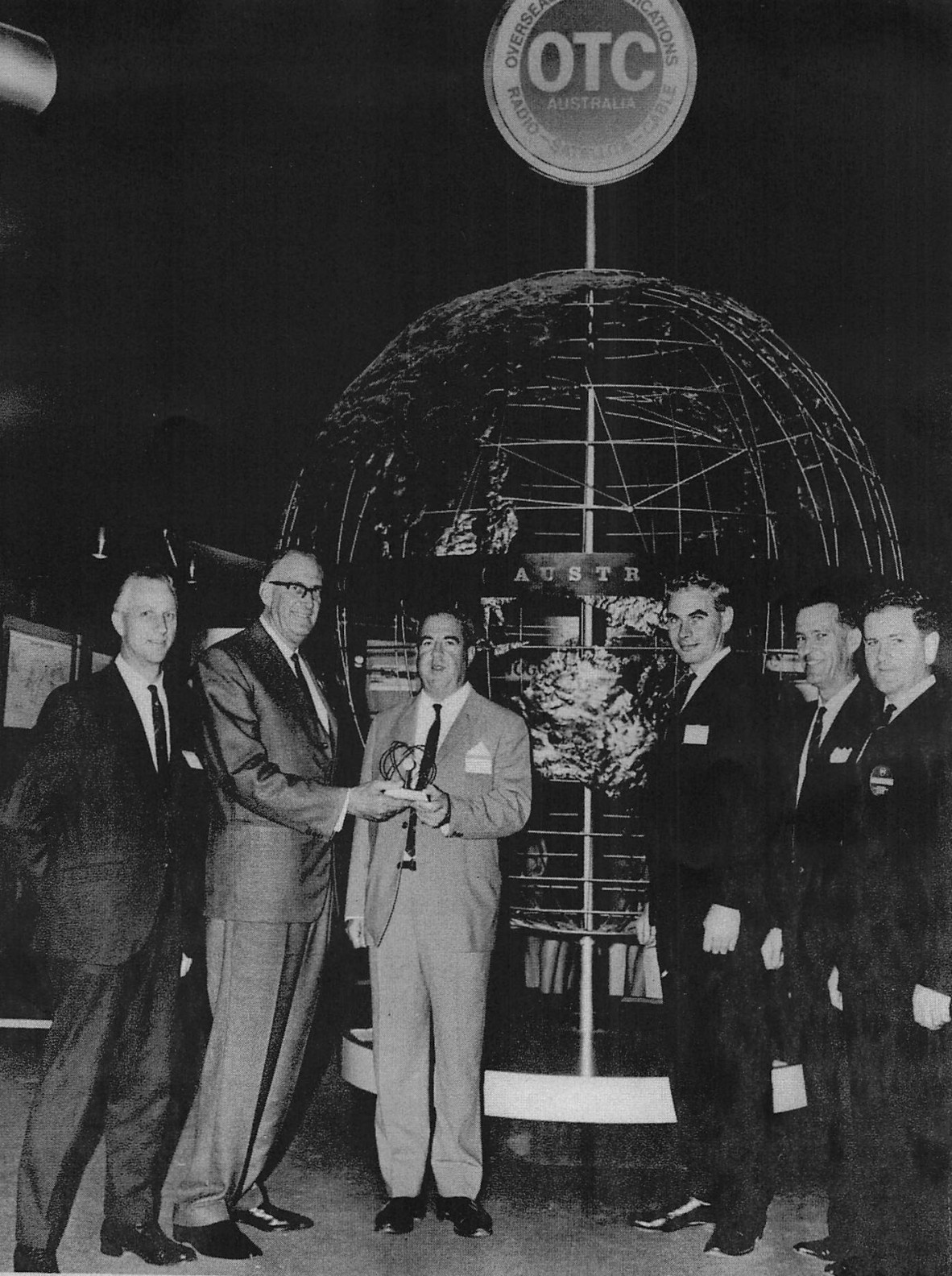
Sir Arthur Petfield and Mr Ray Harris hold an award presented by OTC by the Queensland Chamber of Manufactures for OTC’s exhibit at the 1967 Queensland Industries Fair. With them are (left) Mr Jeff Day and (right) Mr Jim Banks,. Mr Lou Brown and Mr Trevor Thatcher.
29378 Arthur Henry Petfield Papers 1938-1978, John Oxley Library, State Library of Queensland.
1968 - OTC’s Earth Station, Moree, NSW, starts operating – links Australian domestic networks to the international networks via INTELSAT Pacific Ocean satellite.
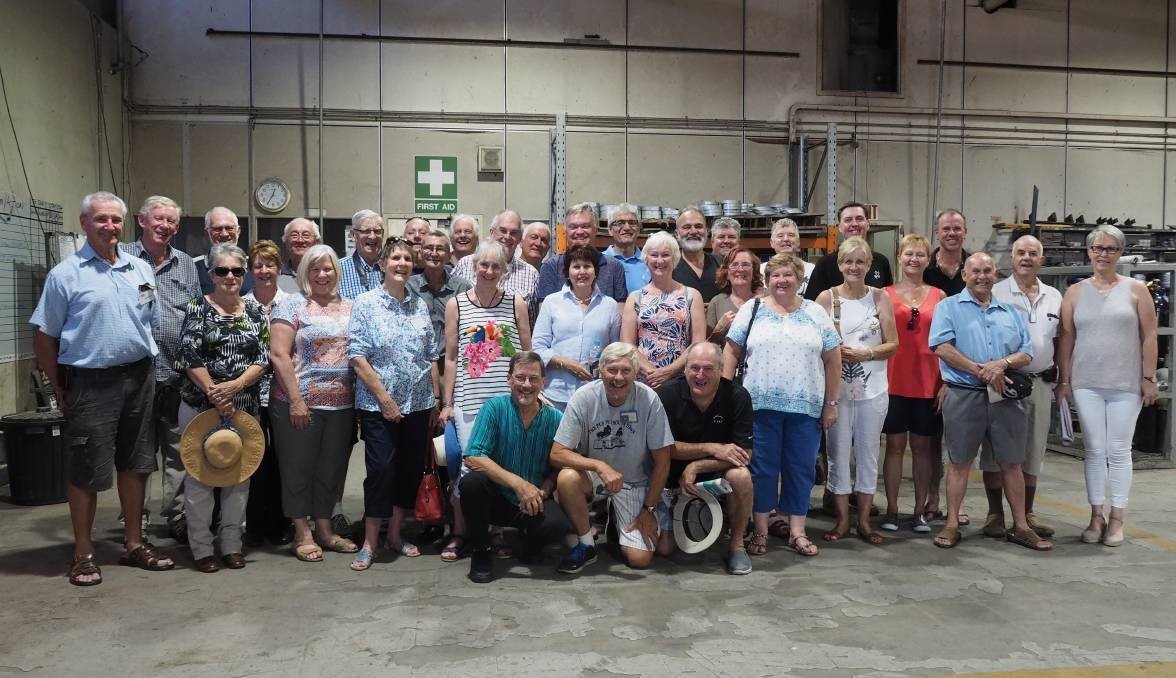
March marked the 50th anniversary of the opening of Moree’s earth station – at the time Australia’s most advanced commercial earth tracking station. This year also marks 30 years since the station was decommissioned in 1988. To celebrate those two milestones, former employees who worked at the station during its 20-year history returned to Moree for a special reunion.
Source: Sophie Harris, 2018.
For a story from John Eades, who recalls his memories of working at the Moree Earth Satallite station during the landing of Apollo 11 in 1969 – read John Eades recalls his memories of working at Moree's OTC satellite earth station during the 1969 moon landing, Moree Champion News, Sophie Harris, 2018.
1969 - Few will forget the connection Australia had with the historic moon landing in 1969, especially after the Australian film, The Dish popularised Australia’s involvement, specifically the communications dish in Parkes, NSW, and that facility’s contribution to enabling the broadcasting of the moon landing to the world (albeit with some degree of filmic licence). However, the OTC dish at Carnarvon had been constructed in 1964 to support the development of space technology and it has been claimed that this earth station was more critical to the moon landing than was the facility at Parkes. The Carnarvon earth station dish has historic value for Australia – and also for Queensland through Sir Arthur Petfield.
The OTC dish that played a part in the moon landing – Carnarvon earth station dish. Before and now photographs below:
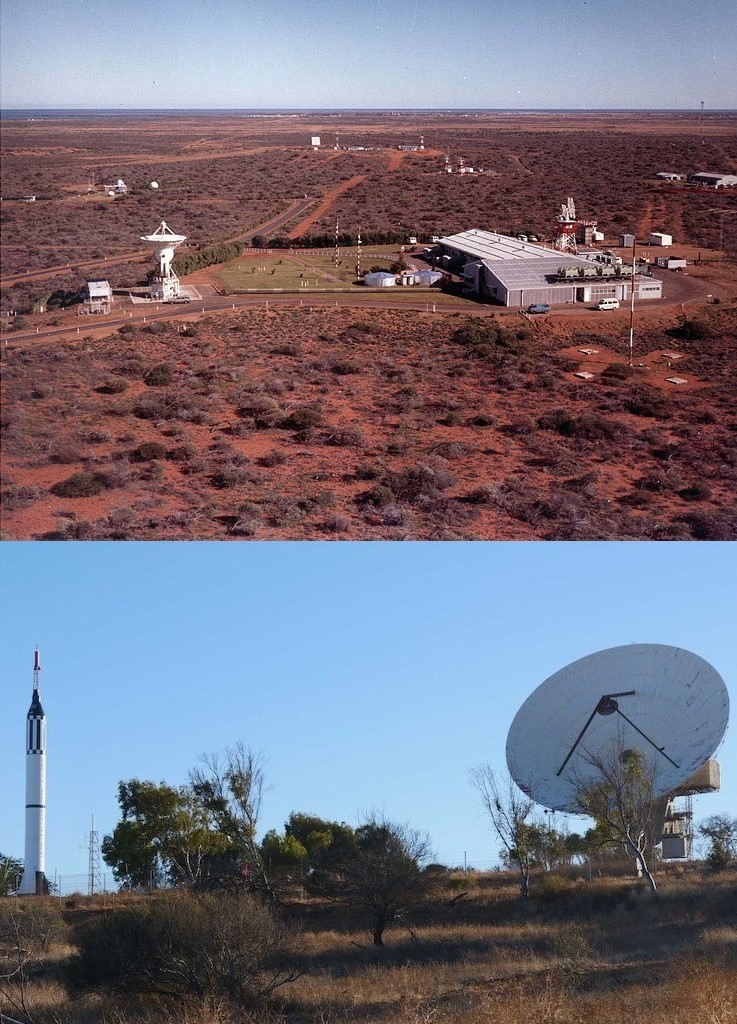
Top: Carnarvon satellite tracking dish – state of the art in satellite technology in 1960s. Source CSIRO. Source: How the Apollo 11 Moon landing was achieved with the vital help of Carnarvon Tracking Station, ABC News, Tracey Stewart, 2019.
Bottom: Today, the OTC’s Carnarvon Tracking Station and the dish that played a part in the moon landings stand abandoned and threatened with demolition. Source: Carnarvon's iconic OTC Dish that played a part in Moon landings may be set for demolition, ABC News Pilbra, Karen Michelmore, 2020.
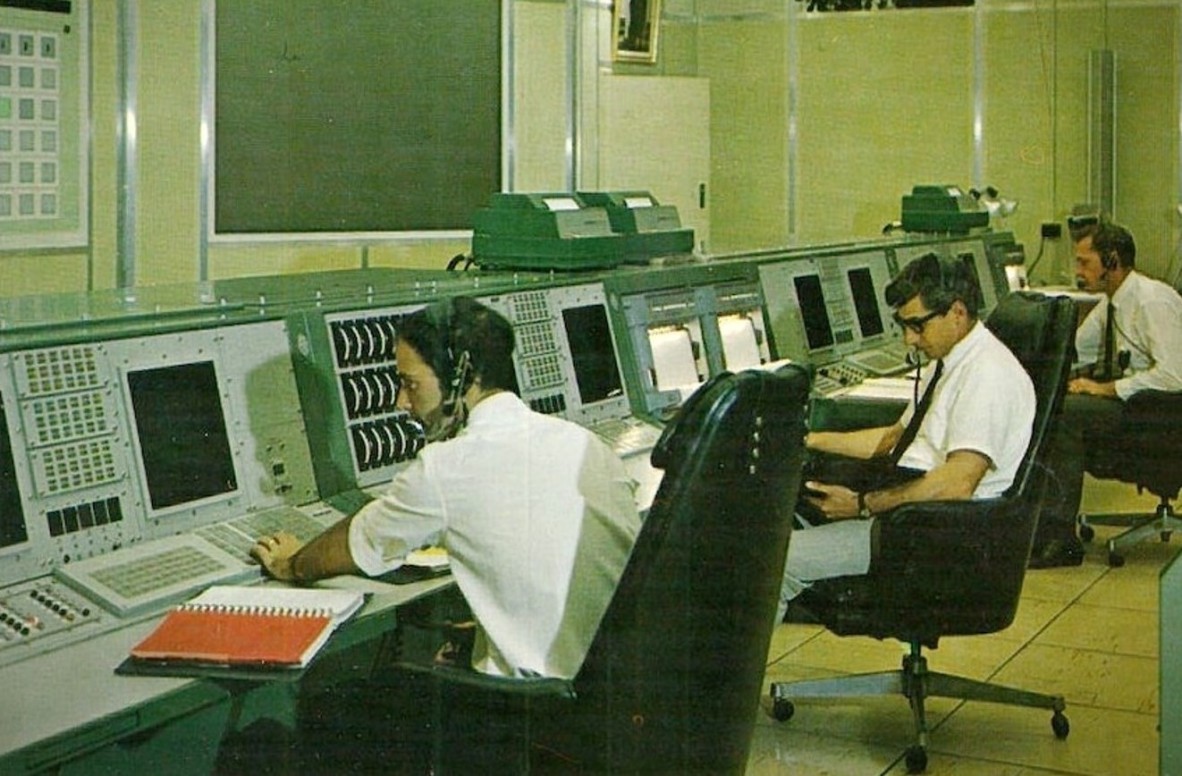
Along every step of the Apollo 11 mission, the Carnarvon trackers were hard at work.
Source: Tito Teraci. How the Apollo 11 Moon landing was achieved with the vital help of Carnarvon Tracking Station, ABC News, Tracey Stewart, 2019.
1970 - Opening of the Ceduna Earth Station.
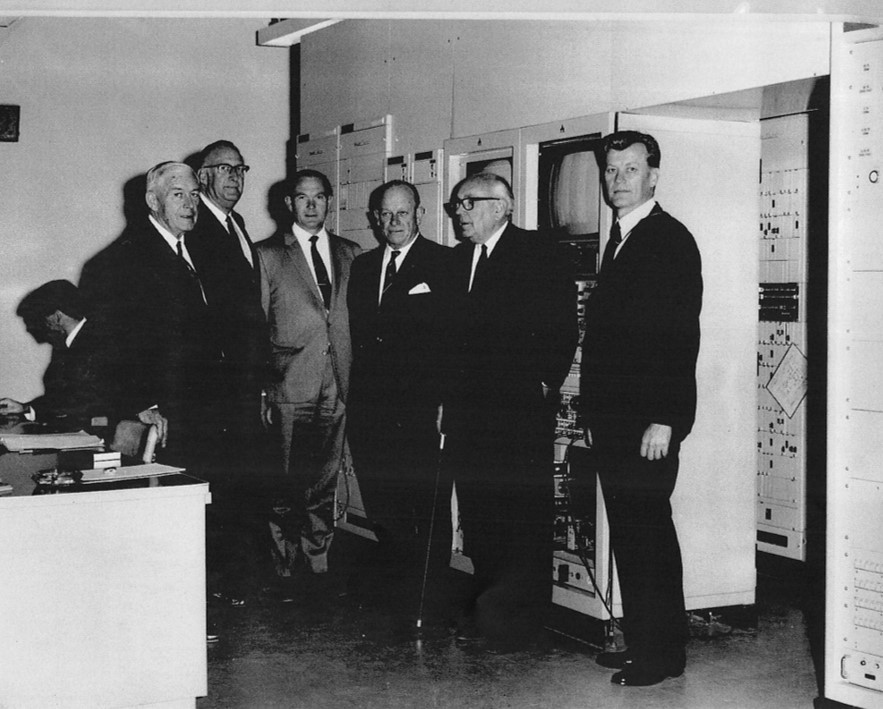
Inside the newly-opened Ceduna Earth Station (from left) the Hon. Alan S Hulme, Sir Arthur Petfield, the then Commissioners Mr B F Jones, Mr C E Kerville and the Hon Denham Henty, and Mr Cyril Vartrick, then Assistant General Manager (Technical).
29378 Arthur Henry Petfield Papers 1938-1978, John Oxley Library, State Library of Queensland.
1972 - 25th Anniversary of OTC – commemorated with the release of a medallion.
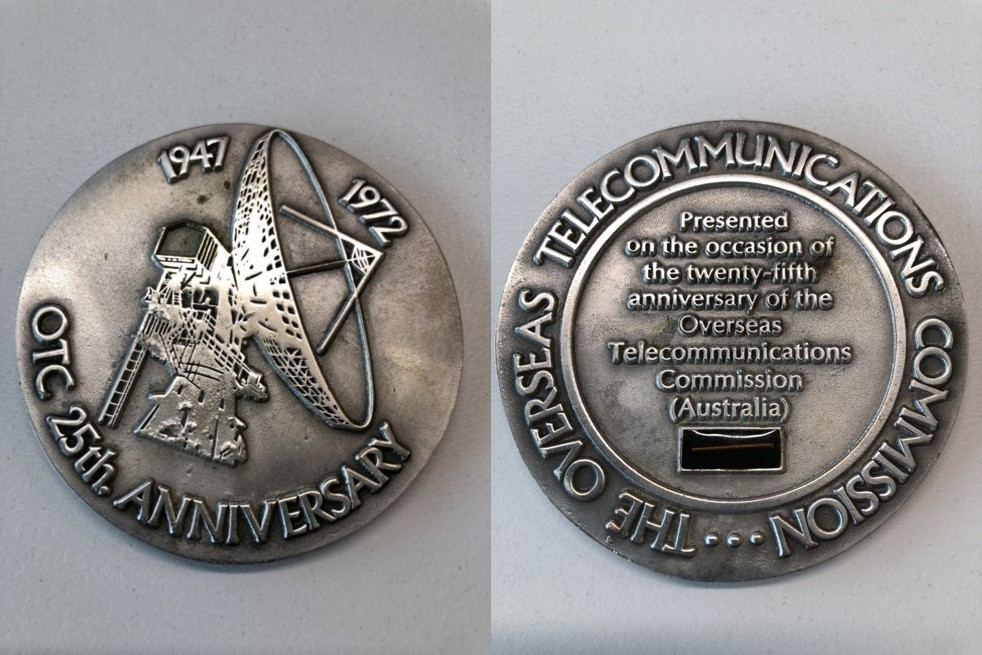
The Overseas Telecommunications Commission (OTC) 25th Anniversary Medallion.
29378 Arthur Henry Petfield Papers 1938-1978, John Oxley Library, State Library of Queensland.
1947-1972. OTC 25th Anniversary - Medal diameter 74mm – Silvered. Obverse side bears an image of a satellite dish and on the reverse side is an embedded piece of copper wire. On the inside lid of the medal’s case is an explanation for the wire:
The copper wire embedded in this medallion was recovered off Darwin on November 21, 1971, from the undersea cable which provided Australia’s first overseas telegraph link on November 20, 1871.
In 1871 the link from Java to Port Darwin completed the first direct undersea cable connection between Australia and Britain, and the medal thus commemorates both old and new telecommunications technology in Australia.
1973 - The opening of the Sydney Opera House by Queen Elizabeth 11 on 20 October, was telecast to overseas viewers by OTC satellite circuits.
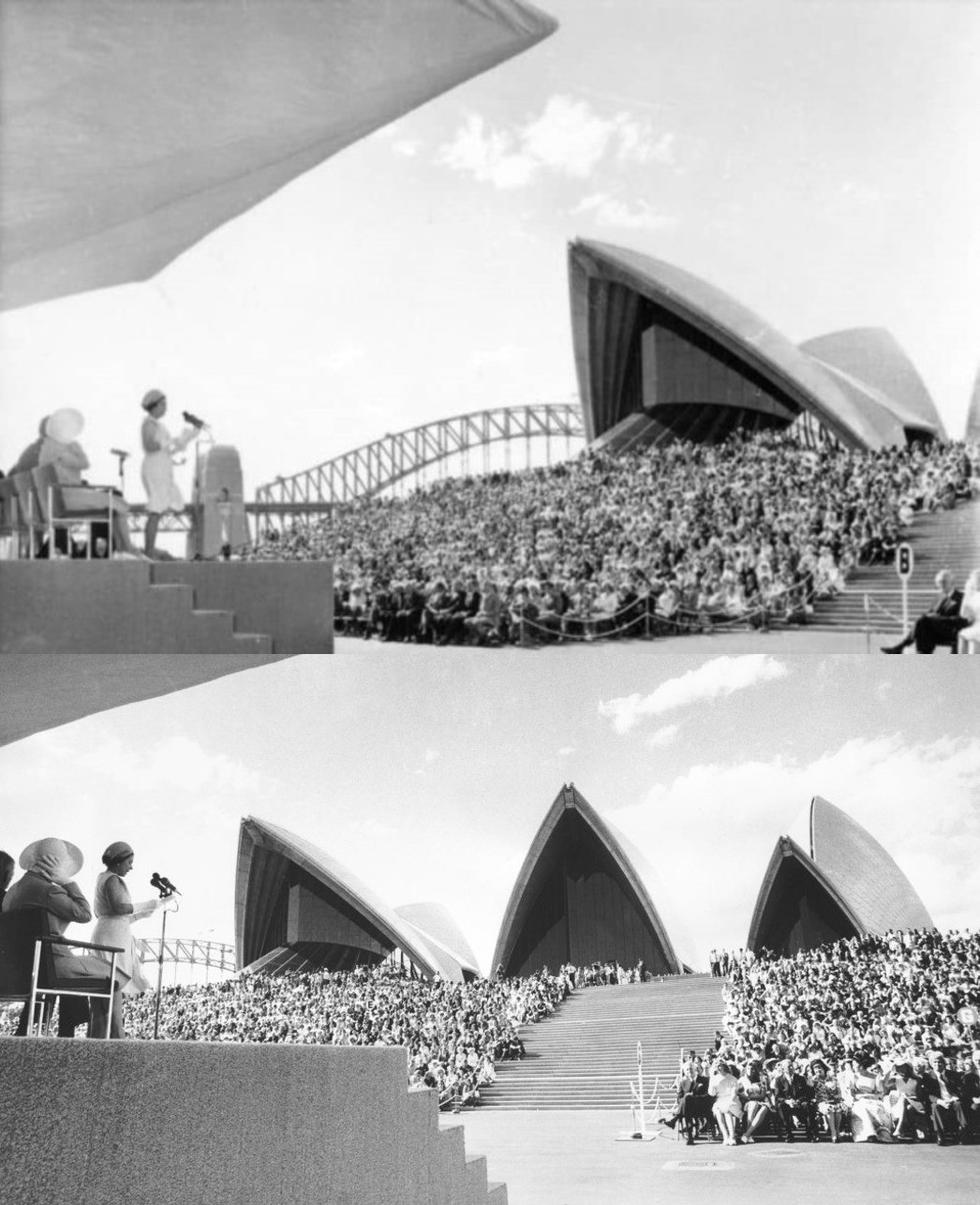
Queen Elizabeth speaks at the opening of the Opera House in 1973.
Source: Fairfax Archives. The day the Sydney Opera House finally opened, Sydney Morning Herald, Helen Pitt, 2008.
1974 - Broadway terminal officially opened by Prime Minister E Gough Whitlam.
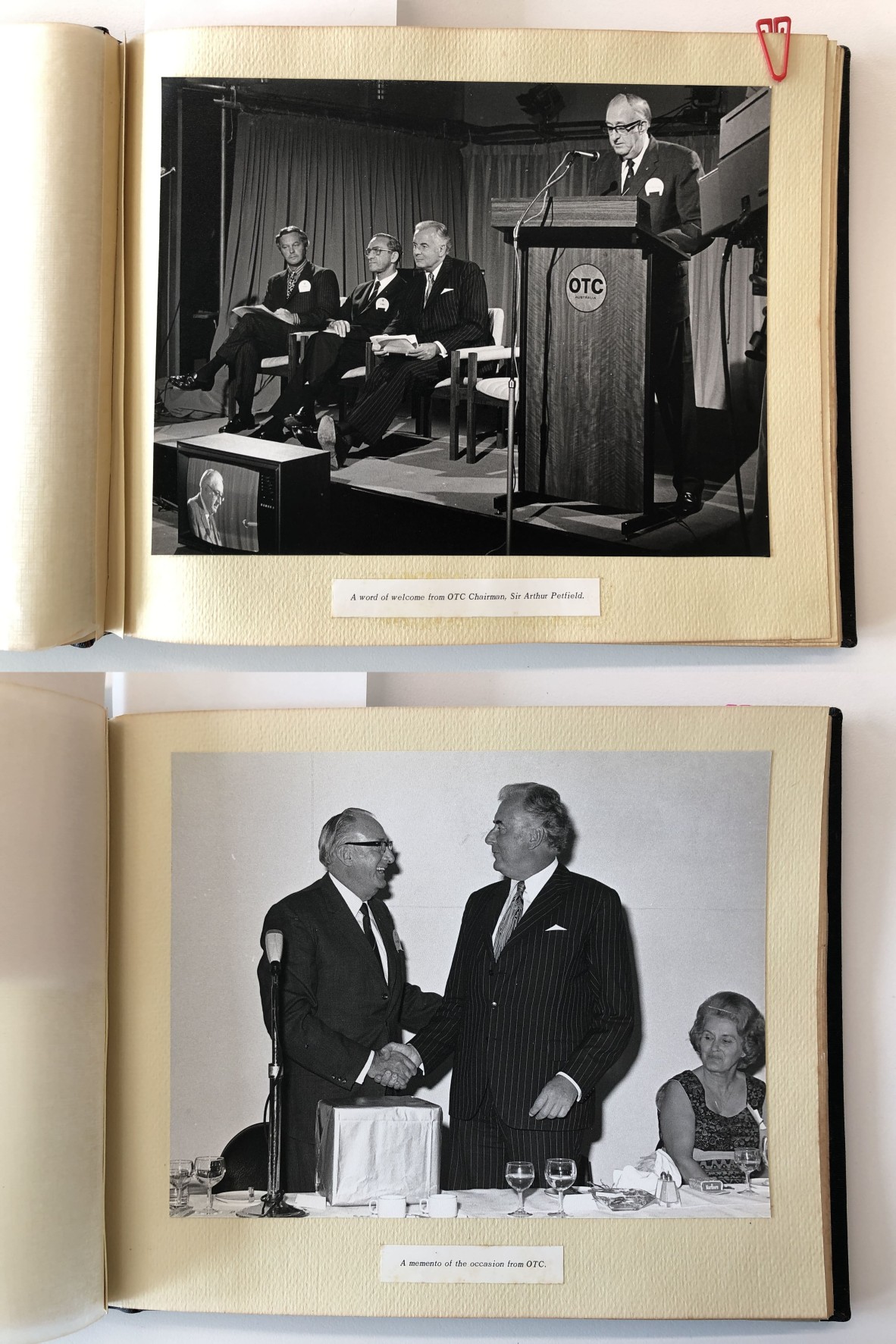
Album - Opening of the Broadway International Telecommunications Terminal 21 February 1974. Sir Arthur Petfield and the then Prime Minister, the Hon EG Whitlam, QC, MP.
29378 Arthur Henry Petfield Papers 1938-1978, John Oxley Library, State Library of Queensland.
Sir Arthur Petfield presents the then Prime Minister, the Hon EG Whitlam, QC, MP, with an antique telephone at the opening of Broadway Terminal on Thursday, February 21, 1974.
29378 Arthur Henry Petfield Papers 1938-1978, John Oxley Library, State Library of Queensland.
Throughout the term of office and up to his untimely death in October 1974, Sir Arthur Petfield supported the OTC and its role as a statutory independent body and opposed the subsumption of the Commission into a broader mega public service department. In a submission to the Australian Post Office Commission of Enquiry in 1973, Sir Arthur pointed out that despite the statutory limitations imposed by virtue of its accountability to government, the OTC ’is considered to be an example of an efficient and successful public enterprise judged by business standards or in terms of the services it provides to the Australian community as a whole. The decision to entrust international telecommunications to one authority, solely dedicated to this task, has been proved by results to have been a good one. The burden of justifying, beyond mere assertion, any major change to OTC’s separate identity must surely be the responsibility of those who advocate such a step’ (Submission to Australian Post Office Commission of Inquiry, 27 June, 1973).
The OCT continued on into the 1990s when, on February 1992, the Commission, having brought Australia into the global telecommunications network for nigh on fifty years, ceased operations as a separate entity and was merged with Telecom Australia to form the Australian and Overseas Telecommunications Corporation.
Dr Robin Trotter
The Queensland Business Leaders Hall of Fame is an initiative of QUT Business School, State Library of Queensland and the Queensland Library Foundation.
Collections
- The World Shrinkers by Lawrence Durrant and Harry Young, Overseas Telecommunications Commission, 1977. View the full digitised publication of The World Shrinkers.
- 29378 Arthur Henry Petfield Papers 1938-1978
- Cooby Creek Tracking Station Toowoomba digital story.
References
- 29378 Arthur Henry Petfield Papers 1938-1978, John Oxley Library, State Library of Queensland
- Michelmore, Karen, 2020, ABC News Pilbra, Carnarvon's iconic OTC Dish that played a part in Moon landings may be set for demolition.
- Australian and Overseas Telecommunications Corporation Act 1991.
- Australian Post Office Commission of Enquiry, Submission by the Chairman of the Overseas Telecomunications Commission (Australia), 27 June, 1973, John Oxley Library, State Library of Queensland, Brisbane.
- Burns, Bill, 2020, atlantic-cable.com, History of the Atlantic Cable and Undersea Communications from the First Submarine Cable of 1850 to the Worldwide Fibre Optics Network.
- Glover, Bill, 2009, atlantic-cable.com, History of the Atlantic Cable & Undersea Communications from the first submarine cable of 1850 to the worldwide fibre optic network.
- Harris, Sophie, 2018, Moree Champion News, Former OTC employees reunite in Moree to celebrate 50th anniversary of the opening of Moree’s satellite earth station’, Moree Champion News, 4 April, 2018
- Stewart, Tracey, 2019, ABC News, How the Apollo 11 moon landing was achieved with the vital help of Carnarvon Tracking Station.
- Taylor, Peter, 1980, atlantic-cable.com, An End to Silence - Building of the Overland Telegraph Line from Adelaide to Darwin. Methuen of Australia.
Related Blogs
Comments
Your email address will not be published.
We welcome relevant, respectful comments.